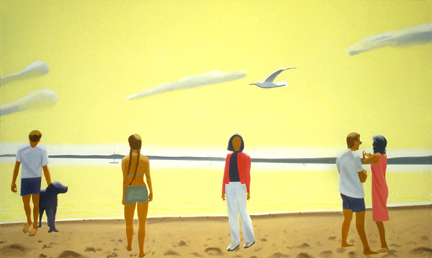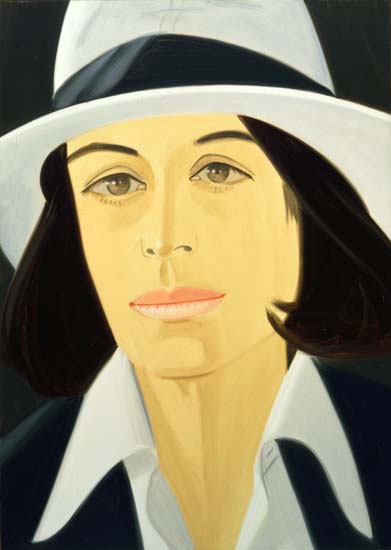Alex Katz, The Per Contra Interview by Miriam N. Kotzin
AK: Matisse can achieve light on local objects with the most elegant means and at the same time construct an all over light: an orange wash is skin in light; a blue wash is silk in light; a brown wash, wood in light. His action: how shapes push against each other is developed and active. His description of volumes is convincing with the simplest means. His direct painting of these complicated paintings is truly awesome.
Bonnard seems to have abstracted Monet, leaving descriptive painting. He made a powerful over all light. I love his paintings where nothing is happening.
I love Pollock because he gave me permission to paint off the top of my head and have the confidence that my inner rhythm sense could make sense to other people.
PC: When you were in high school you spent hours drawing casts while some of the other students were making posters—this traditional cast drawing has shown up in your work in your pure and elegant line and in mastery of drawing. What other effects has it had?
AK: Drawing casts made me realize that I could get better if I applied focused energy to a project. Cast drawing is a system of no artistic merit in itself and consequently allows you to understand other systems, for example. Cubist drawings, and accept or discard them. Systems only have value when they are absorbed by the unconscious.
PC: When you worked for the muralist you had to enlarge drawings and you got to pounce the canvas [transfer the image from the paper to the canvas by using a chalk that goes through perforations along the lines of the drawing]. This is a technique you use now for your large paintings, having first done photographs and small sketches in oil. What other things did you learn in your commercial work that have had application in your art?
AK: Advertising is visual communication. When esthetics become minimized, communication becomes interesting.
PC: You’ve done sets –and sometimes costumes--for the Paul Taylor dance group---what’s the process that you go through in designing sets and costumes for dance? What sort of collaborative process is it? How is that different from doing the sets for Kenneth Koch’s play, George Washington Crossing the Delaware?

Penobscot Morming
2000
Oil on Linen
144" X 240"
White Hat
1979
Oil on Linen
48" X 34"

With Kenneth Koch, I developed the concept reading the script. The language was rhetorical and two dimensional. I actually would have liked the stage to be three feet deep.
PC: You talk about “open” and “closed” in relation to your work. Would you talk more about that, giving some examples for us to look at in the paintings?
AK: Closed usually means that the line encloses. Open is where the gesture of the paint dominates.
PC: What causes a “three-year-bounce” in artist’s career? Doesn’t a time come when instead of being in fashion, the work (if it’s really good) transcends the label? Putting modesty aside, what happened in the art world so that your work can be seen? When you say some paintings from forty or so years ago that were in the show Alex Katz in the Sixties at Pace Wildenstein “people seem to like ‘em and they seem to make more sense now than when they were new.” So, when you say the paintings seem to make more sense, what’s the implication of that in terms of people “getting” what you’re doing? That something seems difficult and then it doesn’t seem difficult any more...
AK: The three year bounce is when an artist connects style with fashion. Every artist has some relation with this. Very few artists get on top of the bounce. It’s usually for a few years (Three?). Picasso only had it in analytical cubism. After that, his painting got better, but his bounce was gone.
Braque had it with his black and white collages.
Malevich in his non-objective paintings had it in the 20th century teens.
Miro, in the 20th Century twenties.
Pollock, Bacon and DeKooning(his women) in the early fifties.
PC: Because one of the three museum shows of your work is an exhibition of paintings of your wife, Ada [the others are Musee d’Osay in Paris and The National Museum of Art, Osaka, Japan], I hope you’ll allow a personal question or two. The material from the museum quotes Irving Sandler, that Ada "is woman, wife, mother, muse, model, sociable hostess, myth, icon, and New York goddess.” How the forty portraits (from 1957 forward) indicate these various aspects of Ada, we’ll leave to others to determine. You’ve said in an interview with Brian Appel that you “ran into Ada in ’57.” How did you meet her? Were you introduced by friends? Where did you run into her?
